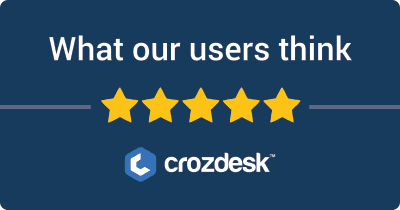
Introduction to BuzzSumo and Brandwatch in Social Listening Tools
BuzzSumo and Brandwatch are two prominent tools in the social listening space, each serving unique purposes tailored to different aspects of social media monitoring and content marketing.
-
Main Purposes:
- BuzzSumo primarily focuses on content research and amplification, helping users identify trending topics, key influencers, and high-performing content across social media platforms.
- Brandwatch, in contrast, excels in comprehensive brand monitoring and consumer insights, offering in-depth analytics on brand perception, sentiment analysis, and competitive benchmarking.
-
Common User Considerations: Users gravitate towards these tools for their powerful capabilities in tracking engagement, understanding audience sentiment, and optimizing content strategies.
Primary Comparison Aspects:
-
Features:
- BuzzSumo provides tools for content discovery, influencer identification, and analytical insights on engagement metrics.
- Brandwatch offers a broader set of features, including real-time social media monitoring, sentiment analysis, and complex reporting capabilities.
-
Pricing:
- BuzzSumo typically has a more flexible pricing model suited for small to medium-sized businesses focused on content strategy.
- Brandwatch, while generally higher in cost, positions itself towards larger enterprises requiring advanced analysis and extensive data integration.
-
Ease of Use:
- BuzzSumo is renowned for its user-friendly interface and straightforward navigation, making it accessible for users at any skill level.
- Brandwatch, although powerful, may have a steeper learning curve due to its comprehensive features and data complexity.
These aspects are crucial for potential users to consider when choosing between BuzzSumo and Brandwatch, depending on their specific social listening needs and objectives.
BuzzSumo VS Brandwatch: Which tool is the most popular?
| Tool | Number of Reviews | Average Rating | Positive Reviews | Neutral Reviews | Negative Reviews |
|---|---|---|---|---|---|
| BuzzSumo | 6 | 4.33 | 6 | 0 | 0 |
| Brandwatch | 15 | 2.93 | 8 | 0 | 7 |
BuzzSumo is the most popular tool, receiving only 6 reviews but achieving a high average rating of 4.33, with all reviews being positive. Brandwatch, while having a higher number of reviews at 15, has a lower average rating of 2.93, indicating a mix of positive and negative feedback, with 7 negative reviews.


BuzzSumo and Brandwatch: Quick Comparison Overview
| Feature/Aspect | Ahrefs | SEMrush |
|---|---|---|
| Primary Features | – Site Explorer – Keyword Explorer – Backlink Checker – Content Explorer – Rank Tracker |
– Keyword Research – Site Audit – Position Tracking – Content Analyzer – Marketing Insights |
| Target Audience | – SEO professionals – Digital marketers – Agencies focusing on content marketing and backlink analysis |
– Digital marketers – SEO experts – Content marketers – Social media marketers and PPC specialists |
| Main Advantages | – Robust backlink analysis – Comprehensive keyword data – Intuitive user interface – Constantly updated index |
– All-in-one digital marketing tool – Extensive competitor analysis – Wide array of tools for SEO and PPC – Integrated social media management |
| Core Value Proposition | Focused on providing in-depth SEO insights, particularly strengths in backlink profiles and organic keyword rankings. Ideal for users prioritizing content strategy and link-building efforts. | Offers a holistic view of digital marketing, making it easier to manage all aspects of online presence through an extensive range of tools for SEO, PPC, and social media marketing. |
| Ideal Use Cases | – Conducting comprehensive link audits – Developing effective content strategies – Tracking backlinks and organic rankings – Keyword planning for SEO campaigns |
– Managing and optimizing PPC campaigns – Conducting competitive analysis for market positioning – Comprehensive content analytics and SEO tracking – Social media metrics and management |
Most liked vs most disliked features of BuzzSumo and Brandwatch
| Tool | Most Liked Features | Most Disliked Features |
|---|---|---|
| BuzzSumo | – User-friendly, aiding in news tracking and opportunity discovery. | – Limitations in the free version, with many features reserved for premium users. |
| – Alert feature keeps users updated on brand mentions and relevant topics. | ||
| – Streamlines research, minimizing extensive Google searches. | ||
| – Helps find popular content titles and trending topics that meet user interests. | ||
| – Overall features support content marketing and planning effectively. | ||
| Brandwatch | – Extensive access to historical data enhances understanding of consumer behavior. | – Need for more straightforward and extensive exporting options. |
| – Tailored dashboards for specific campaigns and insights are highly appreciated. | – Mobile app has limited features compared to the desktop version. | |
| – Effective sentiment tracking tools help monitor brand sentiment and consumer feedback. | – Limits on daily data downloads hinder larger analyses. | |
| – Positive feedback on customer support and tool integration. | – Onboarding process could be improved for new users. | |
| – User-friendly interface with easy setup for queries and dashboards. | – Cumbersome setup process for training sentiment classification models, lacking flexibility. |
Key Features of BuzzSumo vs Brandwatch
Key Features of BuzzSumo
-
Content Discovery:
- Benefit: Users can find trending topics and the most shared content across various platforms. This helps in identifying what resonates with audiences, allowing for better content strategy planning.
- Unique Aspect: BuzzSumo’s content discovery tool is focused on finding high-engagement pieces, enabling users to tailor their content accordingly.
-
Influencer Identification:
- Benefit: The platform allows users to discover key influencers in their niche, facilitating collaborations that can amplify reach and engagement.
- Unique Aspect: BuzzSumo provides detailed metrics on influencers, including their social media reach and engagement rates, which aids in selecting the right partners.
-
Social Media Monitoring:
- Benefit: Users can track and analyze social media mentions and discussions around specific keywords or brands, providing insights into public perception.
- Unique Aspect: BuzzSumo offers alerts for specific keywords, keeping users updated in real-time about any relevant mentions or trending topics.
-
Competitor Analysis:
- Benefit: Users can analyze competitor content and performance, allowing for strategic adjustments and competitive positioning.
- Unique Aspect: The tool provides a visual representation of competitor performance, making it easier to understand market dynamics at a glance.
-
Content Performance Insights:
- Benefit: Users can analyze how their content performs in comparison to others, allowing for data-driven decisions in future content strategies.
- Unique Aspect: BuzzSumo includes a ‘Content Analyzer’ feature that provides in-depth analytics on content performance metrics.
Key Features of Brandwatch
-
Social Listening:
- Benefit: Brandwatch tracks online conversations across social media, blogs, forums, and news sites, enabling businesses to understand public sentiment and customer opinions.
- Unique Aspect: Brandwatch excels in natural language processing, allowing for deeper sentiment analysis and context understanding amidst large volumes of data.
-
Data Visualization:
- Benefit: Users can visualize conversations and trends in user-friendly dashboards, making complex data easy to interpret for informed decision-making.
- Unique Aspect: The platform offers interactive visualizations which help stakeholders easily share insights across teams.
-
Consumer Research:
- Benefit: Users can gather insights on consumer trends, preferences, and behaviors, helping refine marketing strategies and product development.
- Unique Aspect: Brandwatch’s “Audience Insights” tool aggregates demographic data, offering a comprehensive profile of target audiences.
-
Alerts and Reports:
- Benefit: Users receive real-time alerts on strategic keywords and comprehensive reports summarizing findings, allowing for timely responses to emerging trends or crises.
- Unique Aspect: The use of customizable dashboards to tailor user experiences based on specific monitoring needs sets Brandwatch apart in providing focused insights.
-
Competitive Benchmarking:
- Benefit: Users can compare their brand performance against competitors, identifying areas of strength and opportunities for growth.
- Unique Aspect: Brandwatch includes industry-specific benchmarks, ensuring users measure their performance against relevant market standards.
Summary
Both BuzzSumo and Brandwatch deliver robust social listening tools with unique strengths. BuzzSumo is centered on content discovery and influencer engagement, making it ideal for those focused on content marketing. In contrast, Brandwatch provides comprehensive data analytics, advanced sentiment analysis, and demographic insights, making it highly suitable for brands seeking deep consumer understanding and competitive analysis. Each tool offers distinct benefits that cater to various user needs and objectives within the realm of social listening.
BuzzSumo vs Brandwatch Pricing Comparison
| Feature | BuzzSumo | Brandwatch |
|---|---|---|
| Pricing Tiers | 1. Free Trial | 1. Starter |
| 2. Pro | 2. Core | |
| 3. Plus | 3. Elite | |
| 4. Large | 4. Enterprise | |
| Monthly Subscription Prices | Pro: $99 | Starter: $800 |
| Plus: $179 | Core: $1,200 | |
| Large: $299 | Elite: $2,000 | |
| Annual Subscription Prices | Pro: $990 (10% off) | Starter: $9,600 ($800/month) |
| Plus: $1,950 (10% off) | Core: $14,400 ($1,200/month) | |
| Large: $3,588 (10% off) | Elite: $24,000 ($2,000/month) | |
| Main Features at Each Tier | Pro: 5 Social Accounts, 10 Monthly Alerts, Content Research, Basic Analytics | Starter: Limited Historical Data, Basic Social Analytics, Social Listening |
| Plus: 10 Social Accounts, 20 Monthly Alerts, Content Analysis, Influencer Tools | Core: Full Historical Data, Advanced Analytics, Social Media Reporting | |
| Large: 15 Social Accounts, 50 Monthly Alerts, Advanced Content Insights | Elite: Custom Features, API Access, Premium Support | |
| Free Trials | 30-Day Free Trial available for all tiers | No free trial offered |
| Discounts/Special Rates | Annual subscriptions save 10% off | Custom pricing for enterprise clients |
| Special rates available based on requirements |
Support Options Comparison: BuzzSumo vs Brandwatch
| Support Option | BuzzSumo | Brandwatch |
|---|---|---|
| Live Chat | Available during business hours for immediate assistance. | Available for quick inquiries, operational during business hours. |
| Phone Support | No phone support offered. | Available for urgent support and inquiries. |
| Documentation | Comprehensive knowledge base with articles, FAQs, and guides. | Extensive documentation covering features, troubleshooting, and setup. |
| Webinars | Regularly scheduled webinars on various topics. | Hosts webinars for product training, insights, and updates. |
| Tutorials | Offers video tutorials and step-by-step guides. | Provides video tutorials for product navigation and usage. |
Unique Features of BuzzSumo Vs Brandwatch
| Feature | BuzzSumo | Brandwatch | Value Proposition |
|---|---|---|---|
| Content Discovery | Advanced content discovery using trends and performance metrics across multiple platforms. | Social media monitoring of brand mentions and sentiment analysis. | BuzzSumo offers insights into what content resonates well, aiding in content strategy development. |
| Influencer Identification | Tools for identifying and connecting with influencers based on their content engagement. | Coverage across traditional media, blogs, and forums for comprehensive brand analysis. | Helps marketers leverage influencer marketing effectively by targeting the right personalities for collaboration. |
| Content Research | In-depth analysis of content types, engagement data, and performance metrics. | Customizable dashboards for tracking specific metrics relevant to campaigns. | Facilitates data-driven content creation and optimization, maximizing reach and engagement. |
| Viral Potential Score | Provides a predictability score for potential virality based on historical data. | Artificial intelligence features for predicting trends and consumer behavior. | USability for anticipating what content may perform well increases marketing effectiveness and ROI. |
| Backlink Analysis | Comprehensive backlink tracking to assess SEO performance linked to content. | Competitor analysis including audience demographics and engagement trends. | Understanding link-building opportunities enriches SEO strategy for improved search presence and traffic. |
| Alerts and Notifications | Customized alerts for specific keywords, authors, and topics for real-time updates. | Real-time alerts for brand mentions across various media channels. | Staying updated allows brands to react swiftly to online conversations and manage reputation proactively. |
| Content Collaboration Tools | Workspace for team collaboration on content projects and strategies. | Comprehensive reports and insights delivered directly via email for stakeholders. | BuzzSumo enhances team brainstorming and content development processes, promoting more collaborative marketing efforts. |
| Integration Capabilities | Connects with various other tools (Google Analytics, social platforms) for data synergy. | Integrates with marketing and CRM platforms for holistic campaign insights. | Enhanced reporting and analytics across platforms improve overall marketing strategy alignment and decision-making. |


